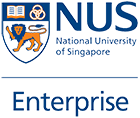Improving Cement Removal Process: How Can We Remove Cement Residue in an Automated, Effective, and Efficient Manner?
Smart Port
Cement carrier vessels play a significant role in transporting cement, a key building material for the construction of infrastructure.
However, during the unloading of cement from the vessel, there is often leftover residue that might be difficult to remove because of the complex and non-standard structures within the cargo holds, that make these residues hard to access.
Although high-pressure jets may be used to reach the odd corners of the cargo hold, it may create more dust and manual scrubbing is often needed when the cement has hardened and has adhered to the surface.
Current Trimming Process
| Stage 1: Tractors
This process takes around 3 hours and requires 2 stevedores. This is usually unable to clean hold edges, corners, and cement stuck in frames; leaving about 10% of the cement as residue, which can weigh from 50 – 500 tonnes |
Stage 2: Sweeping
This process takes around an hour and requires 3-7 stevedores This process uses bamboo brooms and poles to sweep cement from spots that tractors cannot reach |
Stage 3: Bin
This process takes around 30-45min and requires 2 stevedores A tractor scoops up residual cement into the bin |
Challenges
Manpower Crunch
– Manual scrubbing is labour intensive; there might be insufficient manpower in future, as fewer people are willing to take up such a physically demanding job.
Safety Hazard
– Significant amount of cement dust is released when the last residues of cement are removed, posing a health hazard to workers and causing irritation of respiratory system if inhaled.
– Stevedores are often required to work in odd physical positions to scrape the cement off the surface. The process also poses exposure to cement dust for stevedores.
Time-consuming
– Given that the operations of the vessel including loading and unloading are already contingent upon weather conditions, any delay caused by the time-consuming process of removing cement residues further exacerbates the issue and wastes valuable time; affecting the efficiency and productivity of the entire operation.
Desired Outcome
Solutions will overcome the manpower-intensive and hazardous nature of this task, ideally, with a self-operating or remotely controlled system that can remove the residue effectively and in timely manner.
Successful solutions will:
– Not damage cargo holds
– Take no more than 2-3 hours to clear each hatch
– Result in a clean surface; no lumps of cement residue
– Minimize manpower required due to the safety hazard posed by cement dust and time taken for removal of residues
Your Journey to Smart Port Challenge Finals.
Start-ups submit their proposals to the innovation opportunities available.
The proposals go through a rigorous evaluation by a panel of maritime, technology and entrepreneurial experts.
Shortlisted finalists will be invited to enroll into PIER71TM Accelerate, an exclusive six-week market validation and customer discovery programme backed by world-class entrepreneurship education from NUS Enterprise and specifically curated for the maritime industry.
This culminates in the Grand Final where top teams get the opportunity to pitch in front of judges, corporates, investors and the maritime community to secure the top prizes of the Challenge.
Call for Proposals for this Innovation Opportunity is now closed.



